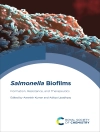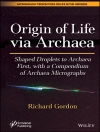This protocol book provides detailed procedures for the isolation of cyanobacteria, extraction, quantification, and detection of cyanotoxins. It illustrates the sampling and processing of toxin-producing cyanobacteria in water and aquatic animal samples, detection of cyanotoxins from Anabaena, Anabaenopsis, Cylindrospermopsis, Microsystis, Microcystis, Nodularia, Nostoc, Schizotrix, Lyngbya, Raphidiopsis, Oscillatoria, Planktothrix in aquatic resources. It also covers toxicity analysis by various bioassay protocols, and in vitro and insilico analysis methods. The book also reviews the methods for cyanotoxin extraction, detection, and quantification by various tools including LC-MS/MS, HPLC, NMR, PCR, and HESI-MS/MS. A separate section is dedicated to the advanced methods in Cyanotoxin analysis including the Molecular Imprinting Method (MIM), Cellular signaling biosensor, Electrochemical sensor, Nanosensors, and screening of Polyketide synthase gene. The analysis of various toxin-producing genes like sxt A and mcy is also accounted for in this book.
In a nutshell, the book gives comprehensive procedures about the basics and preliminary processes that are involved in sample collection to advanced methods incorporated into the well-explored and unexplored Cyanobacterial toxin.
Consequently, this manual is useful for both beginners and advanced researchers, including postgraduate students, academicians, researchers, and scientists in the field of Cyanobacterial research.
Innehållsförteckning
Section 1. Isolation and cultivation methods for Cyanobacteria.- Chapter 1. Collection of toxic Cyanobacteria from fish sample.- Chapter 2. Identification of toxic blooms of cyanobacteria in fresh water (lake, ponds) habitat.- Chapter 3. Identification of toxic blooms of cyanobacteria in marine water habitat.- Chapter 4. Identification of toxic blooms of cyanobacteria in Mangrove forest.- Chapter 5. Identification of toxic blooms of cyanobacteria in Estuarine habitat.- Chapter 6. Identification of toxic blooms of cyanobacteria in Saltpan habitat.- Chapter 7. Sampling and Identification of toxic cyanobacteria in Landfill Leachate.- Chapter 8. Handling and processing of Cyanobacterial toxin containing pond and lake water samples.- Chapter 9. Isolation of toxin producing Cyanobacteria from aquatic samples with Anabaena.- Chapter 10. Isolation of toxin producing Cyanobacteria from aquatic samples- Anabaenopsis sp.- Chapter 11. Isolation of toxinproducing Cyanobacteria from aquatic samples with Cylindrospermopsis sp.- Chapter 12. Isolation of toxin producing Cyanobacteria from aquatic sample with Nodularia sp.- Chapter 13. Isolation of toxin producing Cyanobacteria from aquatic samples with Nostoc sp.- Chapter 14. Isolation of toxin producing Cyanobacteria from aquatic samples with Schizotrix.- Chapter 15. Isolation of toxin producing Cyanobacteria from aquatic samples with Lyngbya.- Chapter 16. Isolation of toxin producing Cyanobacteria from aquatic samples with Raphidiopsis.- Chapter 17. Isolation of toxin producing Cyanobacteria from aquatic samples – Oscillatoria.- Chapter 18. Isolation of toxin producing Cyanobacteria from aquatic samples – Planktothrix.- Chapter 19. Analysis of Cyanobacterial species composition and variation analysis among toxic blooms.- Chapter 20. Confocal Laser Scanning Microscope (CLSM) Identification of Toxic Cyanobacteria from Algal Bloom.- Chapter 21. Determination of Cyanotoxin patterns in strains and species of cyanobacteria.- Chapter 22. Chemical and toxicological studies of the toxic freshwater cyanobacterium – Microcystis aeruginosa.- Chapter 23. Chemical and toxicological studies of the toxic freshwater cyanobacterium – Anabaena flosaquae.- Chapter 24. Risk assessment of microcystin in the water resources.- Chapter 25. Extraction and quantification of BMAA from water sample.- Chapter 26. Extraction and quantification of BMAA from fish tissue.- Chapter 27. Postmortem sampling of Cyanobacteria in the case of suspected Drowning.- Section II. Toxicity analysis of Cyanotoxin.- Chapter 28. Detection of Cyanotoxins using Vertebrate bioassays in Mice.- Chapter 29. Detection of Cyanotoxin toxicity in Fish.- Chapter 30. Detection of Cyanotoxins using Invertebrate bioassays in brine Shrimp.- Chapter 31. Identification of Cyanobacterial toxins from Lichen thalli.- Chapter 32. Detection of Cyanotoxins using Bacterial bioassays.- Chapter 33. Detection of Cyanotoxins – Bioassay usingplants.- Chapter 34. In vitro assay for determining cyanotoxin using serological methods.- Chapter 35. In vitro assay for determining cyanotoxin using cell line method- Hepatotoxicity (cell lines- Hep G2, Ca Co2, and V79).- Chapter 36. In vitro assay for determining cyanotoxin using cell line method- Neurotoxicity ( Neuro-2A neuroblastoma cell).- Chapter 37. Genotoxicity of Cyanotoxins.- Chapter 38. In silico analysis of cyanotoxin using computational tools.- Section III. Cyanobacterial toxin Extraction, detection and quantification.- Chapter 39. Extraction of Cyanotoxins using filtration and other methods.- Chapter 40. Extraction of Cyanotoxin by filtration and other methods from Biological materials (animal tissue: fish and mussels).- Chapter 41. Extraction and quantification of Nodularins from fish samples by LC-MS/MS.- Chapter 42. Extraction and quantification of Nodularins from Shrimp samples by ELISA.- Chapter 43. Extraction and quantification of Cylindrospermopsins from aquatic samples by ELISA.- Chapter 44. Extraction and quantification of Anatoxins from aquatic samples by HPLC with Fluorescence detection.- Chapter 45. Extraction and quantification of Saxitoxins from aquatic samples by LC-MS/MS.- Chapter 46. Extraction and quantification of Guanitoxin from aquatic samples by HPLC-MS.- Chapter 47. Detection of Anatoxins from aquatic samples by LC-MS.- Chapter 48. Detection of Guanitoxin from aquatic samples by HPLC-MS/MS.- Chapter 49. Detection of cyanotoxin in algal food and feed supplements using UHPLC-MS/MS.- Chapter 50. Rapid detection method of microcystin in water.- Section: IV. Advanced Methods in Cyanotoxins.- Chapter 51. Screening of polyketide synthase genes in the anatoxin-a producing cyanobacteria.- Chapter 52. NRPS and PKS-gene analysis in cyanobacteria using PCR.- Chapter 53. Identification of microcystin, nodularin synthatase gene clusters in toxic Cyanobacteria using anti SMASH pipeline.- Chapter 54. q PCR assay in sxt A gene in Saxiotoxin producing Cyanobacteria.- Chapter 55. q PCR assay for the detection of hepatotoxigenic cyanobacteria.- Chapter 56. Molecular detection of mcy genes in toxic cyanobacteria: Anabaena, Microsystis, Planktothrix.- Chapter 57. Molecular Imprinting Polymer (MIP) in the detection of Microsystin-LR.- Chapter 58. Molecular identification of the cyclic peptide hepatotoxins in Cyanobacteria.- Chapter 59. Molecular identification of microcystin synthetase genes mcy E in cyanobacteria using PCR.- Chapter 60. Molecular identification of cyr C gene in toxic Cyanobacteria in photobiont.- Chapter 61. Detection of nodularin producing cyanolichen by Polymerase Chain Reaction (PCR).- Chapter 62. Discriminationof nodularin toxin producing strains from non-producing strains using PCR.- Chapter 63. Detection of cyanobacterial cell wall components by cellular signaling biosensors.- Chapter 64. Nanosensor devices on the detection of Cyanotoxin.- Chapter 65. Insilico insights into the Cyanobacterial genomes to reveal their metabolic interactions.- Chapter 66. CRISPR Gene Finding in the Genome of Oscillatoria sp. and Lyngbya sp.
.
Om författaren
Dr. N. Thajuddin, Professor, Department of Microbiology, formerly, Dean, Faculty of Science, Engineering & Technology, Bharathidasan University, Tiruchirappalli is a microbiologist with vast experience in cyanobacterial and microalgal taxonomy, cultivation, extraction of valuable products, employing molecular tools in the identification and phylogeny of various microorganisms and bioremediation of effluents. His preliminary work on the survey of marine cyanobacteria has resulted in the establishment of National Facility for Marine Cyanobacteria funded by Govt. of India. Previously, he had one-year post-doctoral training on molecular taxonomy and phylogeny of cyanobacteria at the Department of Biology, Rensselaer Polytechnic Institute, Troy, New York, USA through Dept of Biotechnology (Govt of India) long term overseas award. He deposited 605 ribosomal RNA of various microbes in Gen Bank and developed barcodes for 6 indigenous fungi using ITS region. He published 370 research articles, review articles, a book on Microbiology & Immunology in Tamil, 3 lab manuals and 5 edited books. He is a life member of various academic bodies and member in editorial boards in national and international journals. He is also a member of Research Advisory Committee, project evaluation committee, chairmen of project monitoring committee for government funded projects. Recently he established National Repository for Freshwater Microalgae & Cyanobacteria funded by the Department of Biotechnology (Govt of India). He filed 5 Indian Patents and two US patents of which one US patent is granted on April 2022. His academic excellence was rewarded in the form of several prestigious awards including Tamil Nadu Scientist Award (TANSA), Dr. G. S.Venkataraman Memorial Best Scientist Award, Dr. M. S. Swaminathan Leadership Award etc., Elected Fellow of Royal Society of Biology (FRSB) London, Fellow of Mycological Society of India (FMSI), Fellow of National Academy of Biological Sciences (FNABS), India and Fellow of Linnean Society (FLS), London.
Dr. Dhanasekaran Dharumadurai is working as an Associate Professor, Department of Microbiology, School of Life Sciences, Bharathidasan University, Tiruchirappalli, India. He has experience in fields of actinobacteriology, phycology and mycology. He has 17 years teaching experience and awarded UGC-Raman Post-Doctoral Fellowship from University Grant Commision, New Delhi and worked in the Department of Molecular, Cellular and Biomedical Sciences, University of New Hampshire, Durham, USA. He has awarded elected Fellow of Linnean Society, London, UK and INSA Visiting Scientist Fellowship awarded by the National Science Academy, New Delhi, Government of India, He is serving as a State President of Microbiologists Society, India for Tamil Nadu. His current research focus is microbiome profiling of plants, animals and human. He filed with two Indian Patent, deposited around 139 nucleotide sequences and 7 metagenome sequences, bacterial draft genome sequence in Gen Bank, 5 bioactive compounds in Pubchem, published 106 research and review articles. He has edited 11 edited books and authored 4 laboratory manuals.
Dr. A. Sankaranarayanan is an Associate Professor in the Department of Life Sciences, Sri Sathya Sai University for Human Excellence, Kalaburagi, Karnataka, India from June 2021 onwards. His current research focus is on Microbial degradation of pollutants and Fermented food products. He has published 12 books, 35 chapters, 63 research articles in International and National journals of repute. From 2002 -2015, he worked as an Assistant Professor & Head, Department of Microbiology, K.S.R. College of Arts & Science, Tiruchengode, Tamil Nadu and August, 2015- May, 2021 associated with Uka Tarsadia University, Surat, Gujarat, India. He has awarded with Indian Academy of Sciences (IASc), National Academy of Sciences (NAS) and The National Academy of Sciences (TNAS) sponsored summer research fellowship for young teachers consecutively for three years and name is included as a Mentor in DST-Mentors/Resource persons for summer/winter camps and other INSPIRE initiatives, Department of Science & Technology, Govt. of India, New Delhi.












